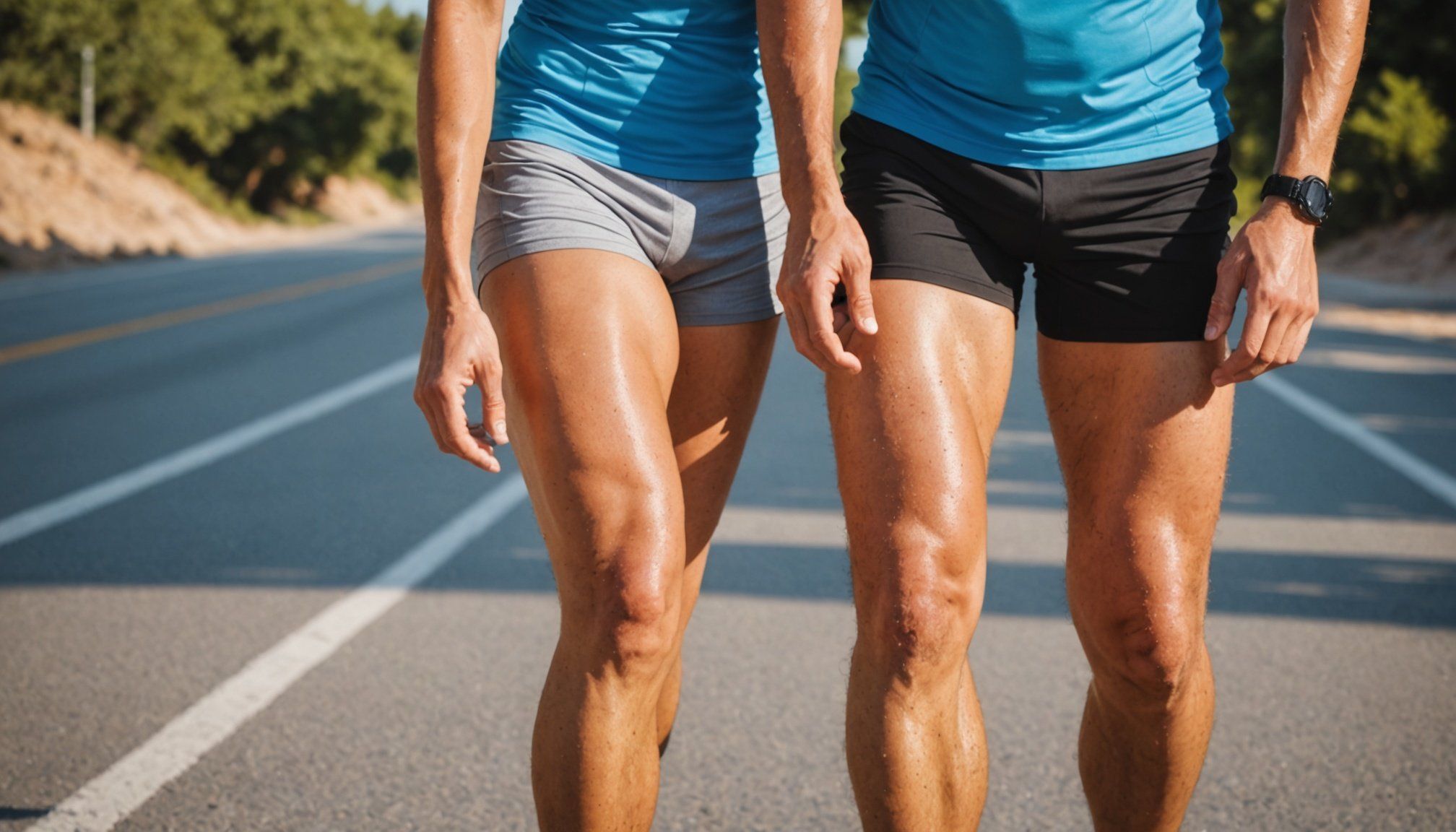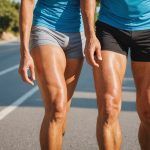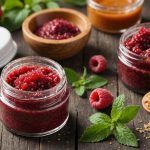Understanding Chafing and Its Causes
Chafing is a skin irritation caused by skin friction, leading to uncomfortable red rashes or blisters. It often occurs when skin repeatedly rubs against clothing or other skin.
Common Causes of Chafing During Extreme Heat
Extreme heat exacerbates chafing due to increased sweat production. Sweat and moisture enhance skin friction, as damp skin offers more resistance to movement, similar to how wet sand sticks to surfaces. Clothing material that isn’t breathable can trap sweat, creating conditions ripe for chafing.
In the same genre : Transform your nighttime look: innovative styling tips for dazzling metallic accents
- Skin friction against sweat-soaked clothes or other surfaces is a primary chafing cause.
- The friction intensifies with prolonged activities in high temperatures.
- Wearing tight or ill-fitting clothes poses higher risks as they can rub persistently against the skin.
Impact of Sweat and Moisture on Skin Friction
Sweat accumulation increases skin’s water content, reducing its natural lubrication. This situation converts normally smooth movement into a source of irritation. Continuous rubbing, especially in heat, weakens the skin’s outer layer. Moisture acts like an adhesive, allowing surfaces to stick and rub more aggressively, worsening heat-related skin issues. It’s important, therefore, to choose clothing wisely and manage sweat to mitigate chafing risks effectively.
Top Tips for Preventing Chafing
Chafing can be an annoying and painful experience, particularly during outdoor activities. Choosing the right clothing is essential for chafing prevention. Opt for attire that is not only comfortable but also allows your skin to breathe. In hot weather, snug clothing tends to trap heat and moisture, which exacerbates irritation. Thus, lightweight, loose-fitting clothing is preferable as it permits airflow and keeps you cool.
Also to see : Transform your glow: discover the hidden benefits of natural rosewater in the uk beauty routine
A critical element in skin protection is the use of moisture-wicking fabrics. These fabrics pull moisture away from the skin, keeping you dry and reducing the friction that leads to chafing. Fabrics such as polyester blends, nylon, and even some high-performance cottons can be effective options. Avoid regular cotton as it retains moisture and can make chafing worse.
Additionally, applying protective creams and lubricants can be hugely beneficial. Products like petroleum jelly or specialist anti-chafing balms provide a barrier that helps reduce friction. When applied liberally before engaging in outdoor activities, these products can prove invaluable in skin protection.
By incorporating these strategies, you can significantly improve your comfort and chafing prevention during any adventure.
Recommended Products for Chafing Prevention
Discovering the right anti-chafing products can make all the difference in comfort. Whether you’re looking for creams or protective wear, choosing the right gear is essential.
Best Anti-Chafing Creams
When it comes to chafing prevention, creams are often a go-to solution revered for their effectiveness. Body Glide, for instance, has garnered positive reviews due to its skin-friendly ingredients and long-lasting protection. Similarly, Chamois Butt’r is celebrated for its soothing properties, reducing irritation and creating a protective barrier when applied. When selecting a cream, look for formulations that promise all-day coverage and suit your skin type.
Recommended Clothing Options
For clothing, focus on materials that prioritise moisture-wicking and breathability. Fabrics like nylon or polyester excel in drawing sweat away from the skin, ensuring dryness. Items with seamless designs further minimise friction. Brands such as Under Armour and Patagonia offer seamless activewear that caters to these requirements, providing flexibility and support.
Useful Accessories
Supportive accessories can make a significant difference. Arm sleeves or thigh bands are specifically designed to diminish friction. Look for models with non-slip grips to guarantee they stay in place. Each accessory not only adds an extra layer of protection but also ensures an enjoyable and comfortable experience in physical activities.
Techniques for Application and Usage
When considering the application methods for creams and lubricants in your personal care routines, it’s crucial to start with clean, dry skin. This ensures maximum absorption and efficiency. For optimal results, use a small, pea-sized amount and gently massage the product onto the skin using circular motions, allowing it to fully penetrate the surface.
Timing plays an important role in skin care. Apply these products about 20-30 minutes before engaging in activities, like exercising or swimming, to allow the skin to absorb the product and create a protective barrier. This timing helps maintain moisture and prevents chafing or irritation.
When involved in prolonged activities, reapplication is key for maintaining personal care and comfort. Carry a travel-sized version of your product for easy and quick touch-ups. Reapply after excessive sweating or towel-drying, as these actions can remove the protective layer.
A few tips to enhance your routine include:
- Patch test new products to avoid adverse reactions.
- Use applicators to reduce contamination risk.
- Store products in a cool, dry place to preserve their efficacy.
Incorporating these application methods into your routine ensures your skin remains protected, comfortable, and well-nourished.
Recognizing and Managing Chafing Symptoms
Chafing is a common concern, often resulting in skin irritation due to prolonged friction. Recognising the signs and symptoms of chafing is crucial for effective management. Typically, chafing symptoms include redness, tenderness, and a stinging sensation on the affected area. In more severe cases, it may progress to swelling, blistering, or even bleeding.
Understanding the severity levels of chafing helps in determining the appropriate intervention. Mild cases usually present as irritation and discomfort, while moderate to severe cases involve more intense pain and potential skin breakdown.
When addressing chafing, initiating first aid steps promptly can significantly alleviate discomfort and promote healing. Immediate actions include:
- Gentle cleansing: Wash the affected area with mild soap and water to remove sweat and bacteria.
- Drying: Carefully pat the skin dry; avoid rubbing as it may exacerbate irritation.
- Application of ointment: Use a calming ointment or zinc oxide cream to protect the skin and facilitate healing.
These care solutions are essential for ensuring quick recovery and preventing further damage. Regular assessment, combined with appropriate care and attention to chafing symptoms, helps maintain healthy, irritation-free skin.
Personal Anecdotes and Expert Insights
Addressing chafing can be more relatable through personal experiences. Many individuals who’ve faced this issue understand the discomfort it causes during physical activity. For instance, Sarah, a marathon runner, once recounted how she coped with chafing during long-distance runs by using anti-chafing cream recommended by her coach.
Gaining insights from experts provides solutions grounded in science. Dermatologists often emphasise the importance of choosing the right fabrics. Breathable materials that wick sweat away from the skin are crucial. Sports professionals advocate for the use of moisture-absorbing underwear to reduce friction and irritation.
Testimonials from athletes highlight the effectiveness of these strategies. John, a cyclist, shared how layering clothing resulted in sweating and chafing, but switching to specialised gear made a world of difference. This community feedback suggests that experimentation and proactive measures can help mitigate discomfort.
Moreover, tips gathered from community feedback offer practical solutions. For example, using deodorant on friction-prone areas is a popular hack. Trying various tactics, like adjusting clothing fit or investing in quality sportswear, can significantly improve comfort levels. By combining professional advice with personal anecdotes, individuals can find the most effective approach for their needs.
Preventative Measures for Various Activities
When engaging in activity-specific prevention, understanding the nuances of each activity is crucial. For running, breathable fabrics can reduce friction, and using anti-chafing balms on vulnerable areas like thighs and underarms is recommended. Cycling enthusiasts should focus on padded shorts and adjusting the saddle to limit area pressure. For those who love hiking, ensuring proper footwear and moisture-wicking socks can prevent blisters.
Now, consider different skin types and sensitivities. Sensitive skin might require hypoallergenic products, while oily skin could benefit from breathable, non-comedogenic materials. Tailoring solutions to your skin’s particular needs ensures comfort and protection.
Environmental factors play a significant role in chafing. High humidity or intense heat can exacerbate sweat-induced irritation. Selecting appropriate gear that enhances ventilation addresses these challenges effectively. It’s worth investigating the local climate before participating in outdoor sports for a more enjoyable experience.
Practical solutions accommodate diverse needs:
- Use moisture-control garments for hot climates.
- Consider using barrier creams in humid environments.
- Opt for weather-appropriate clothing layers to manage temperature changes during outdoor activities.
Nurturing an understanding of these elements boosts enjoyment while minimizing discomfort during your favourite pursuits.











